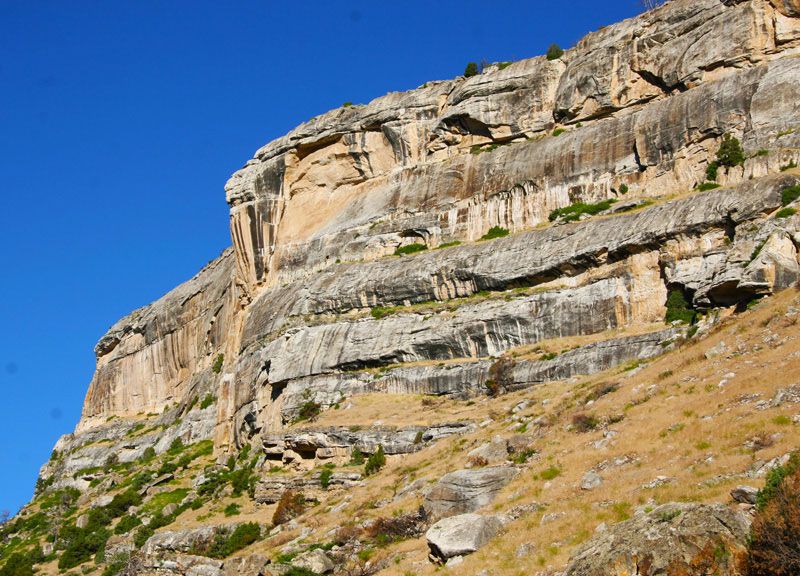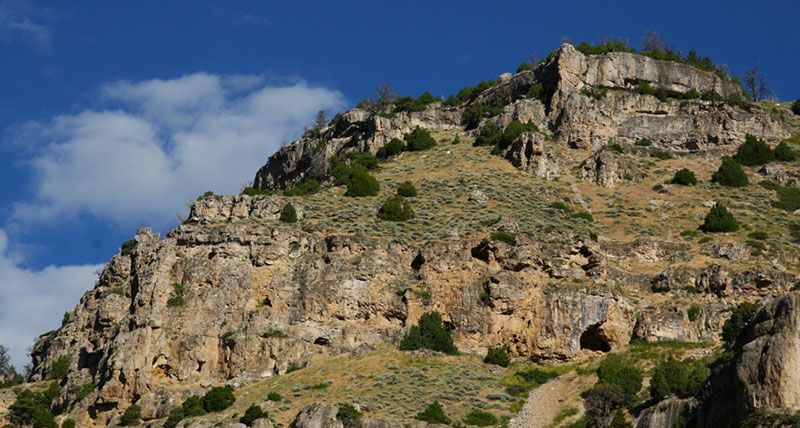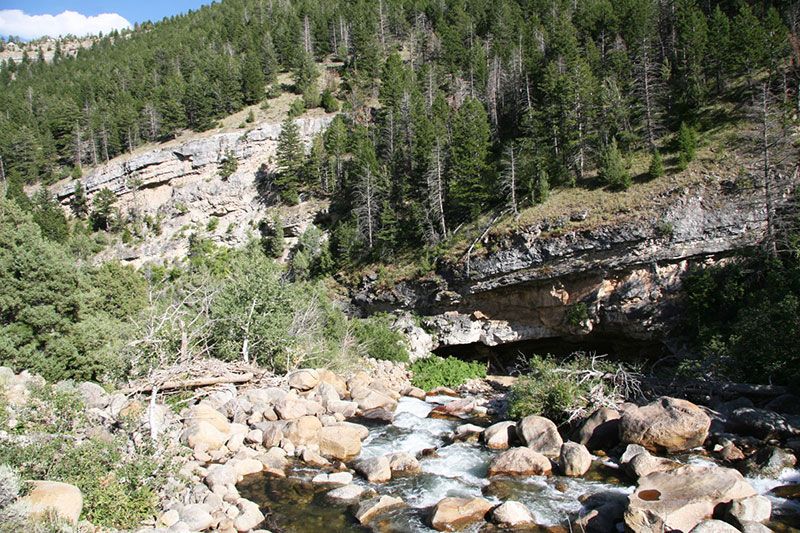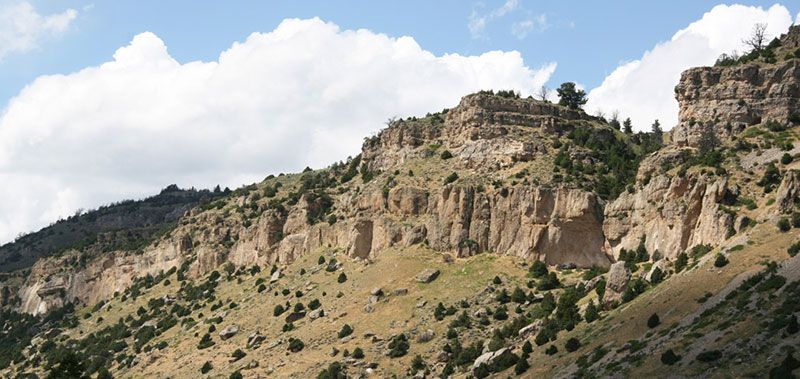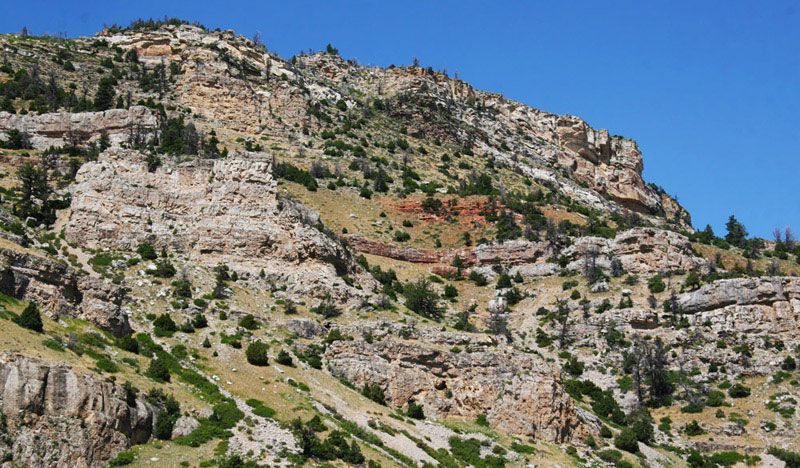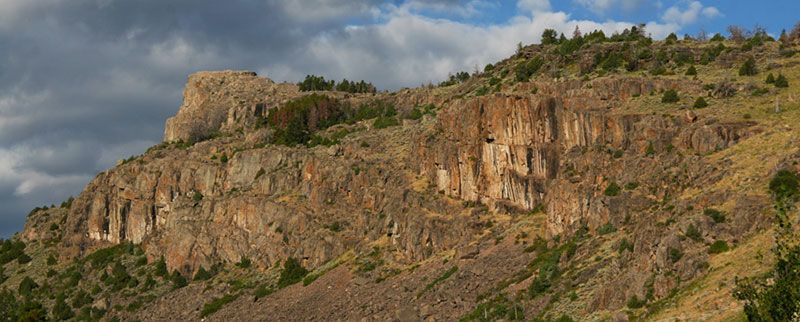Geology from Precambrian Granite to the Laramide Uplift
Wyoming has some of the oldest, most complex, and most easily viewed geology in North America. Much of that geology is visible in and around Sinks Canyon, which cuts into the southeastern slope of the Wind River Mountains.
The geologic history is critical to the understanding of the canyon, because the ecology was created by the geology and is still directly affected by it. Years could be spent studying the geology of the area, but a quick overview will orient you to the canyon’s place in the geologic history.
For many millions of years Wyoming was a flat plain under prehistoric oceans that came and went. During each period of being under water, sediment was deposited. The sediment was from volcanic ash falling over the water, dust and sand being blown across by winds, erosion from nearby landmasses flowing into the sea. Only a tiny fraction was deposited in any given year, but over millions of years thick beds of soil were deposited, each building up and compressing deeper layers. The pressure from the thousands of feet of deposits above as well as heat from the earth’s core worked to turn the deposits into various sandstones, limestones and other rock formations.
These thick layers of sedimentary rock covered the much older bedrock made up mostly of Precambrian granite formed 4 billion years ago when the planet was first created. As these sedimentary layers were being deposited, the plates that make up the earth’s surface were slowly moving. Wyoming was once part of a landmass that was in the tropics for much of its geologic history. Fossils of tropical plants and animals are found in many of the layers of rock in the state. Over millions of years the plates moved to roughly form the continents as we know them today. About 135 million years ago a major geologic event occurred; the Laramide Uplift. This uplift created the Rocky Mountains when a great mass of hot rock from the Earth’s core rose towards the surface, lifting and stretching the continental crust.
This uplift forced the deeply buried bedrock to punch up through the layers of sedimentary rock. As the bedrock pushed up it tilted the layers of sedimentary rock. As you travel through the canyon you can easily see the layers tilting downward from the high peaks towards the valley. The Wind River Range is one of the greatest localized vertical displacements of crustal rock known anywhere in the world. Even as the uplift occurred, erosion, volcanic deposits, and earthquakes kept the mountains largely buried in debris. Entire formations often disappeared as they eroded away. Canyons such as this one and the jagged granite peaks along the continental divide didn’t yet exist. The pictures below show the sedimentary layers visible in the lower half of the canyon.
